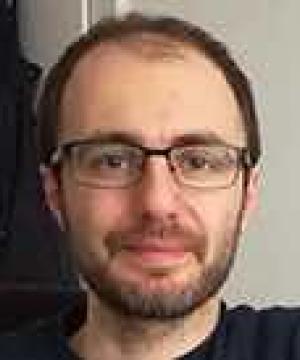
A high order finite-volume scheme puts the following strains on the reconstruction procedure of point values from cell averages: (a) it should compute accurate and non-oscillatory point values of the variables at many locations on the cell boundary (b) many additional internal reconstruction points may be needed for source term approximation and/or grid refinement (c) the reconstruction should handle efficiently the wide variety of neighbors configurations appearing on unstructured grids
In such situations the traditional WENO technique suffers from the difficulty of computing suitable sets of weights for each reconstruction point (existence, optimality, non-negativity, ...). However the CWENO construction first introduced in [1] is much more flexible since the linear weights need not satisfy accuracy requirements. A second and possibly more important advantage is that CWENO computes, via the nonlinear weights, an analytical expression for the reconstruction polynomial: this has uniform accuracy across the cell and it can be later evaluated at reconstruction points and the computation of nonlinear weights need not be repeated for each reconstruction point.
Many CWENO reconstructions have been considered in the literature. Here, I will focus on properly defining the "CWENO reconstruction procedure" pointing out the advantages of this technique. Then, I will introduce the idea of numerical distortion of a numerical scheme and propose a technique to measure it through a notion of numerical temperature. I will present high order schemes which are cool, in the sense that they are characterized by a small value of temperature, thus controlling spurious distorsive effects.
Examples will range from the classical 1D CWENO3 [1, 2], to novel 1D CWENO reconstructions of higher order [3]. Finally, I will present the application of such schemes for the simulation of recently traffic flow models [5].
Biography: Giuseppe Visconti is a Post Doc at the RWTH Aachen University (Aachen, Germany) in the research group of Prof. Michael Herty. He received a B.S. and a M.S. degree in Mathematics from the University of Turin (Turin, Italy) and in 2016 he was awarded Ph.D. in Computer Science and Computational Mathematics from the University of Insubria (Como, Italy). He is active in the area of mathematical modeling at the kinetic scale and in the area of numerical analysis. In particular, his current research involves study of models for vehicular traffic flow and big data as well as study of high-order numerical schemes for hyperbolic equations.
Event websiteLast Updated: May 28, 2020 - 4:05 pm